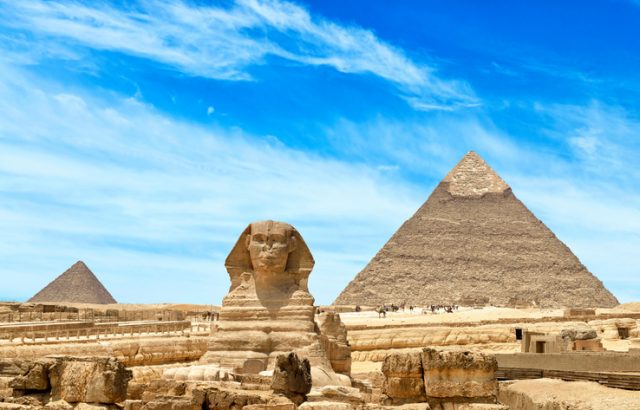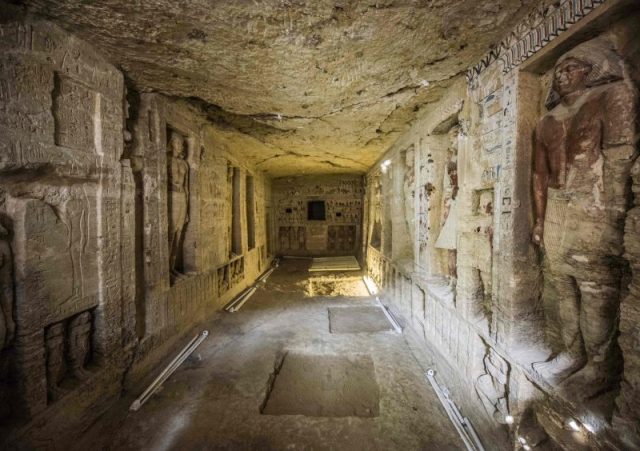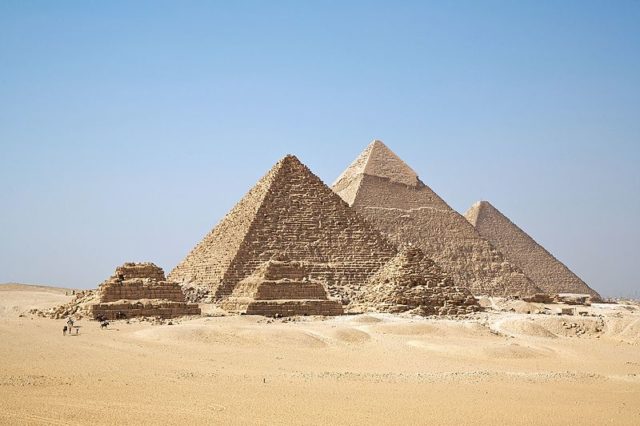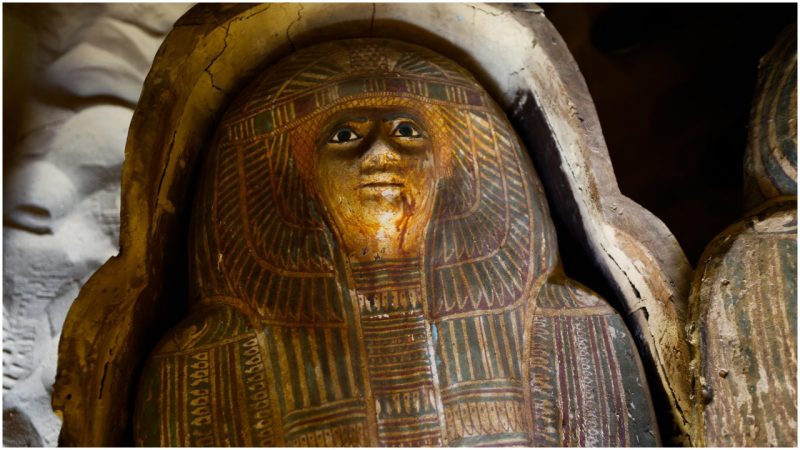An ancient Egyptian necropolis that archaeologists date to around 2500 BC, containing the tombs of high-ranking officials, was recently discovered southeast of the famous Giza Pyramid.
The find includes a limestone tomb from Egypt’s Fifth Dynasty, which stretched from the 25th to the 24th century BC, said Mostafa Waziri, secretary-general of the Supreme Council of Antiquities.
The find contained the remains of two men, “Behnui-Ka, a priest, judge, and purifier who served the kings Khafre, Userkaf, and Niuserre; and Nwi Who, who served as chief of the great state, the overseer of new settlements, and purifier of Khafre,” according to the Archaeological Institute of America. The name Behnui-Ka has never been seen before on the Gaza plateau.

Among the artifacts is a limestone statue that depicts one of the men with his wife and son. The two men’s sarcophagi were found intact, which means their remains are probably inside, but no statement has been made about that as yet.
The fact that these two officials were heavily involved in building had a special resonance for the Egyptian officials. Former Minister of Antiquities, Dr. Zahi Hawass, said as part of the statement made of the pyramid builders that this “shows the world that the pyramids were not built by slaves but that its builders had built their own tombs beside their kings.”
The Fifth Dynasty has yielded another important discovery in 2019: In April a tomb was found of a senior official south of Cairo. His necropolis contained brightly colored reliefs, including a vivid green. There are not many texts available to study and understand the Fifth Dynasty, with much of the context coming to experts through events recorded on stone monuments.

The Fifth Dynasty is often grouped with Dynasties Three through Six, covering the period from 2650 to 2150 BC, which is called the “Old Kingdom”. Pyramids were built during this period, and in fact it is also called “the Age of the Pyramid Builder”.
Historian Marc van de Mieroop has said that the Old Kingdom “is possibly unparalleled in world history for the amount of construction they undertook.”

Most of the 20-odd kings of the period focused on building royal mortuaries for themselves and “they diverted enormous resources from the entire country for this purpose.”
Interestingly, the ancient Egyptian necropolis discovered near Giza was reused during the Late Period, which is early 7th century BC. Many more “Late Period wooden painted and decorated anthropoid coffins were discovered on site” as well, said Waziri in a statement. Tomb re-use was common in Egyptian history.

The Giza Pyramid, the last remaining landmark of the Seven Wonders of the Ancient World, still holds some mysteries. No one is precisely sure when it was built. And recently a group of scientists claimed that the Great Pyramid can concentrate electromagnetic energy in its deepest chambers.
Experts think the Giza Pyramid took 20 years to build but no one can fully explain the mortar used to build it or the exact technology governing its design.
Nancy Bilyeau, a former staff editor at Entertainment Weekly, Rolling Stone, and InStyle, has written a trilogy of historical thrillers for Touchstone Books. Her new book, The Blue, is a spy story set in the 18th-century porcelain world. For more information, go to www.nancybilyeau.com
